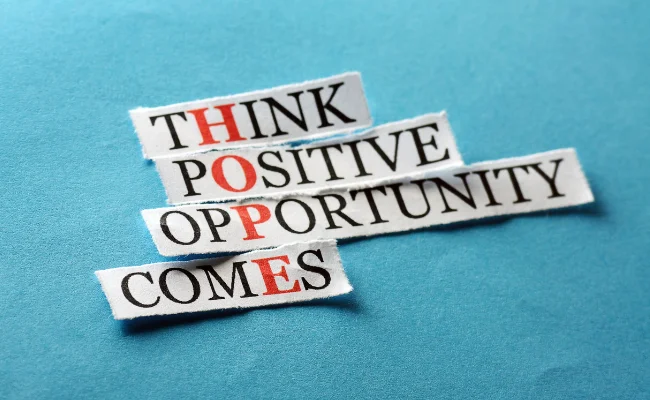Beyond Optimism & Resilience with Janice Perkins
“Authentic optimism is a deep-seated mindset and a daily practice.” – Janice Perkins
I had a delightful conversation with Janice Perkins, MBA, an international speaker, trainer, and leadership coach.
Janice is a Leadership Warrior who liberates hope-inspired capacity for individuals, teams, and organizations. She has devoted her life to empowering others in the art of authentic optimism.
We discuss:
- How hope supports optimism
- Building authentic positivity and hope
- Rising above traumas
How hope supports optimism

You may have seen the phrase “toxic positivity” circulating in recent times. That saying isn’t only a catchy trend, it speaks to the danger of practicing optimism without genuine hope to back it up.
“Optimism can be construed as a mindset. But if it doesn't have hope as a bedrock, then it's more of a veneer.” Janice explains, “I know lots of people who fake optimism and put on that mask that makes them approach things with a smile.”
With authentic optimism, even when there’s a setback or trauma, we can think about all of the things that come from having a deep well of hope—which exists due to the knowledge that there is always a chance for something good to occur.
Hope can coexist with trauma and betrayal because it turns itself into something better. We all know that reality is much more complex than what a “grin and bear it” mentality can see us through.
“When hope is underneath the optimism and the positivity, then there's actual peace that comes with that, there's contentment and a way to ride the wave.” Janice continues, “Because bad seasons come and go. The point is that they go, and when we don't dwell in the swamp, we don't get stagnant.”
Building authentic positivity and hope

Cultivating hope beneath authentic optimism isn’t something you have to see modeled growing up to achieve.
“You don't have to have perfection in your history or a lack of trauma or upheaval. Hope is something that can be built starting right this minute and right this day.” Janice points out.
She shared a wonderful acronym that spells—quite fittingly—the word “bright.”
- B – Build Your Circle
- R – Reflecting and Repeat
- I – Imagining
- G – bo, Leave, Submit
- H – Making it Happen
- T – Tie to Hope
Build your circle
Building your circle means collecting a mixture of people you can learn from and pour into simultaneously.
Reflecting and repeat
Reflecting in this context means identifying what you want to tell others about your trauma, plans for your future, and what you believe deep down. What do you want to say out loud about it? Work on repeating those truths to yourself and others once you determine them.
Imagining
This stage can look like vision boards, mantras, and creating good habits through affirmations to ensure the alignment of your heart, mind, and spirit.
Go, leave, submit
It takes the intentional act of submitting to the idea of hopefulness to resist the pull to cling to anxiety or bad habits.
“We can't depend on being a victim, or defeatism.” Janice shares, “We have to let go of all those negative mindsets and submit to something good. We also have to let go of what I call Plan B's. So when we are anticipating something good will happen moving forward, we have to not plan for it to fail, so that we go all in on Plan A.”
Making it happen
Making it happen means filling your tank with gratitude and things that bring happiness. This practice can look like the following:
- Reading a favorite book
- Spending time with loved ones
- Gratitude journals
- Watching a favorite show or movie
Tie to hope
Tie to hope means hope has to become part of you. This stage happens through daily practices and affirmations that anchor you to hopefulness. Hope is not out there, it's inside everyone—nothing moves forward without it.
“When I start to feel uncomfortable, when I begin to be anxious again, or I begin to feel sad or have that Pigpen cloud, I realize that I'm more optimal, and I stand on stronger ground when I am tied to the state of hopefulness.” Janice shares.
Rising above traumas

Trauma tends to squelch hope and paint bleaker pictures than reality. How can we rise above prolonged suffering and traumatic events?
“Resilience isn't enough.” Janice explains, “We have to have deep wells of hopefulness. And quite frankly, we have to be stubborn, and say, ‘This isn't going to take me down. And it doesn't matter how many times you knock me down, I'm still going to stand up and do my level best today, to achieve and to overcome.’ And those things in combination with that hopefulness and the ability to look forward, really enable us to be that long-standing resilient leader that's necessary.”
The logical self becomes stronger when the emotional self is understood. Alignment makes people stronger and less shameful.
“We can't control our physical vessels and how long they last, but having emotional stability and spiritual stability along with our logical self and our physical body is incredibly important.” Janice continues, “When I feel more at risk, I double down on what I'm ingesting and make sure that it's pure.”
“Pure,” in this sense, refers to less junk food, surrounding yourself with positive people, and ingesting uplifting media across music, shows, and podcasts to combat times of higher emotional susceptibility.
Being curious within yourself is a fantastic place to start when it comes to cultivating hope and authentic optimism. What's important to you? Where do you want to spend your time?
Be sure to check out Janice’s full episode, and learn more at IHaveCapacity.com!








